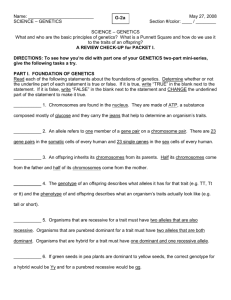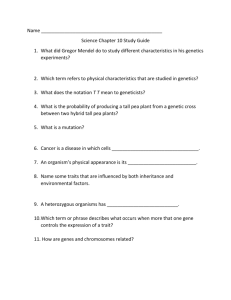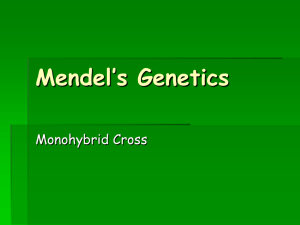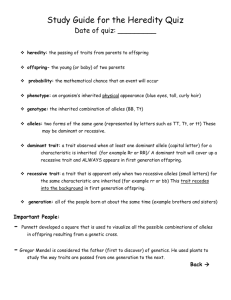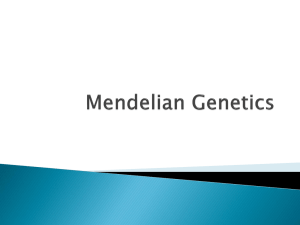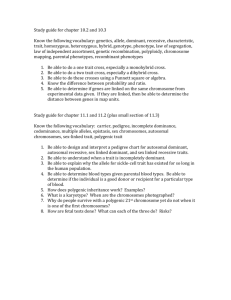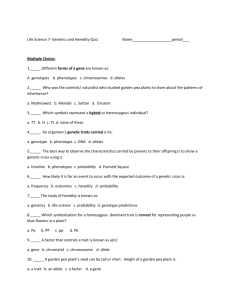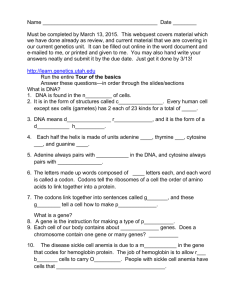G2a
advertisement
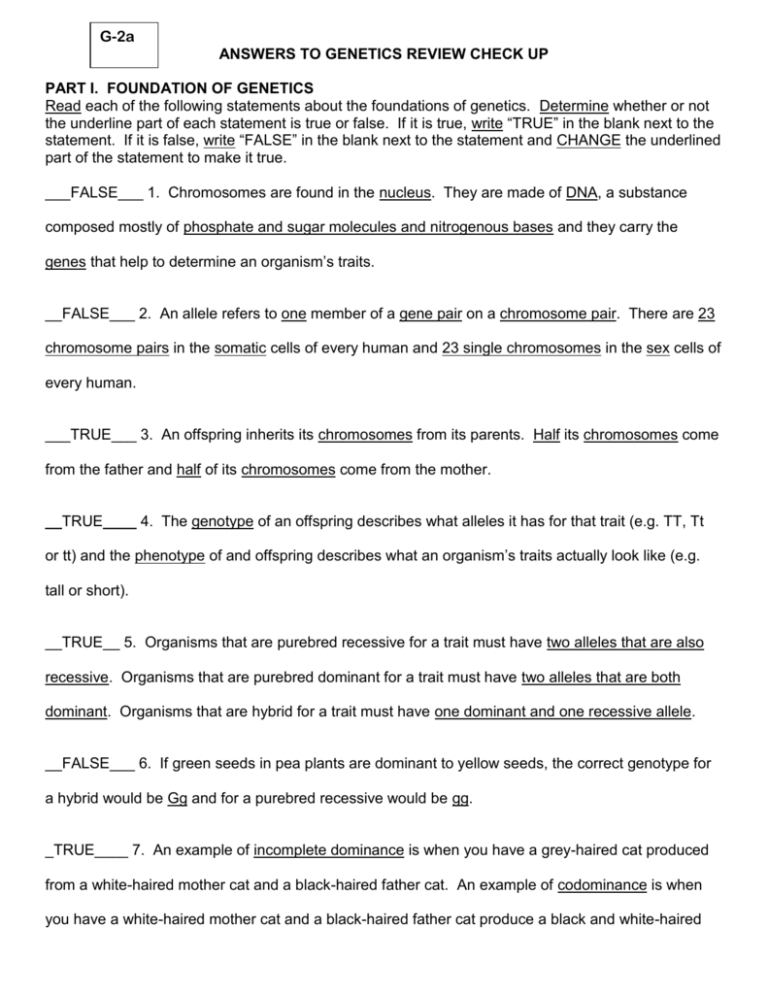
G-2a ANSWERS TO GENETICS REVIEW CHECK UP PART I. FOUNDATION OF GENETICS Read each of the following statements about the foundations of genetics. Determine whether or not the underline part of each statement is true or false. If it is true, write “TRUE” in the blank next to the statement. If it is false, write “FALSE” in the blank next to the statement and CHANGE the underlined part of the statement to make it true. ___FALSE___ 1. Chromosomes are found in the nucleus. They are made of DNA, a substance composed mostly of phosphate and sugar molecules and nitrogenous bases and they carry the genes that help to determine an organism’s traits. __FALSE___ 2. An allele refers to one member of a gene pair on a chromosome pair. There are 23 chromosome pairs in the somatic cells of every human and 23 single chromosomes in the sex cells of every human. ___TRUE___ 3. An offspring inherits its chromosomes from its parents. Half its chromosomes come from the father and half of its chromosomes come from the mother. __TRUE____ 4. The genotype of an offspring describes what alleles it has for that trait (e.g. TT, Tt or tt) and the phenotype of and offspring describes what an organism’s traits actually look like (e.g. tall or short). __TRUE__ 5. Organisms that are purebred recessive for a trait must have two alleles that are also recessive. Organisms that are purebred dominant for a trait must have two alleles that are both dominant. Organisms that are hybrid for a trait must have one dominant and one recessive allele. __FALSE___ 6. If green seeds in pea plants are dominant to yellow seeds, the correct genotype for a hybrid would be Gg and for a purebred recessive would be gg. _TRUE____ 7. An example of incomplete dominance is when you have a grey-haired cat produced from a white-haired mother cat and a black-haired father cat. An example of codominance is when you have a white-haired mother cat and a black-haired father cat produce a black and white-haired offspring. ___FALSE____ 8. Mutations can result in negative and postive outcomes and are sometimes caused by environmental factors called mutagens. They can occur when a gene on a chromosome becomes lost, turned around, or detached and reattached to another chromosome. ___FALSE___ 9. Genes for different traits are inherited separately. For example, the gene for red hair and for having freckles are always inherited separately. ___TRUE____ 10. Genetics is based on the mathematical concept of probability. Because each parent donates one allele for a trait, there are always four possible offspring outcomes. Punnett squares help us to predict the phenotype and genotypes of these four possible offspring outcomes. PART II. PUNNETT SQUARES Create and interpret a Punnett Square for the following situation. Write the correct allele letters for the parents and offspring in the blanks and boxes provided. List the outcome probability (percent and fraction) of phenotype and genotype in the table provided. In Mendel’s experiment with pea plants, he studied several different traits of pea plants. He discovered that the dominant trait for seed shape was round and the recessive trait was wrinkled. Assume that a hybrid plant for seed shape and a purebred recessive plant for seed shape are “crossed” (i.e. mated) with one another. _R__ __r__ OUTCOME PERCENT FRACTION Round 50 2/4 Rr rr _r__ phenotype Wrinkled 50 2/4 _r_ phenotype Rr rr Purebred 0 0/4 dominant Hybrid 50 2/4 Purebred recessive 50 2/4
